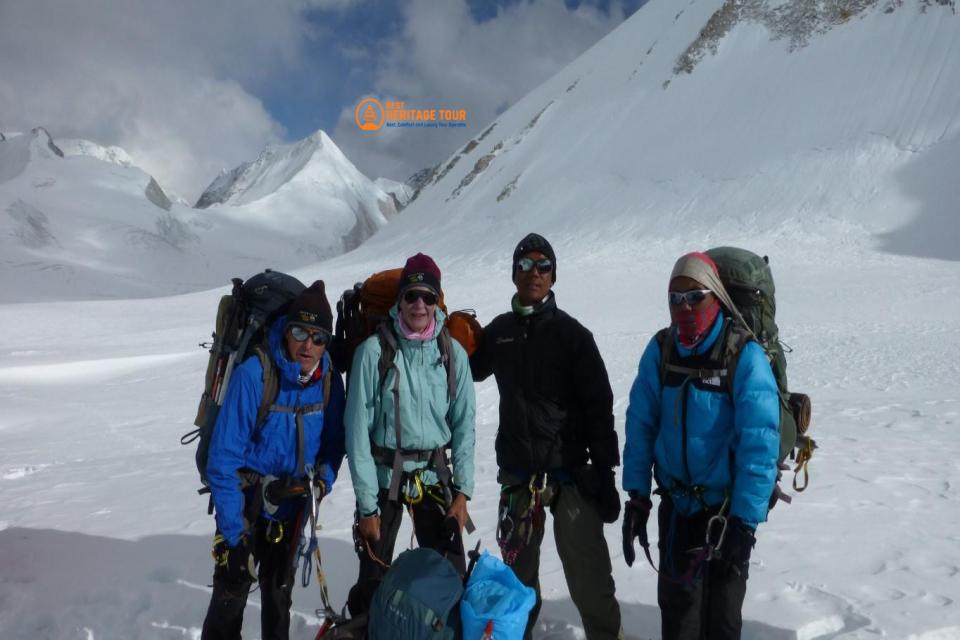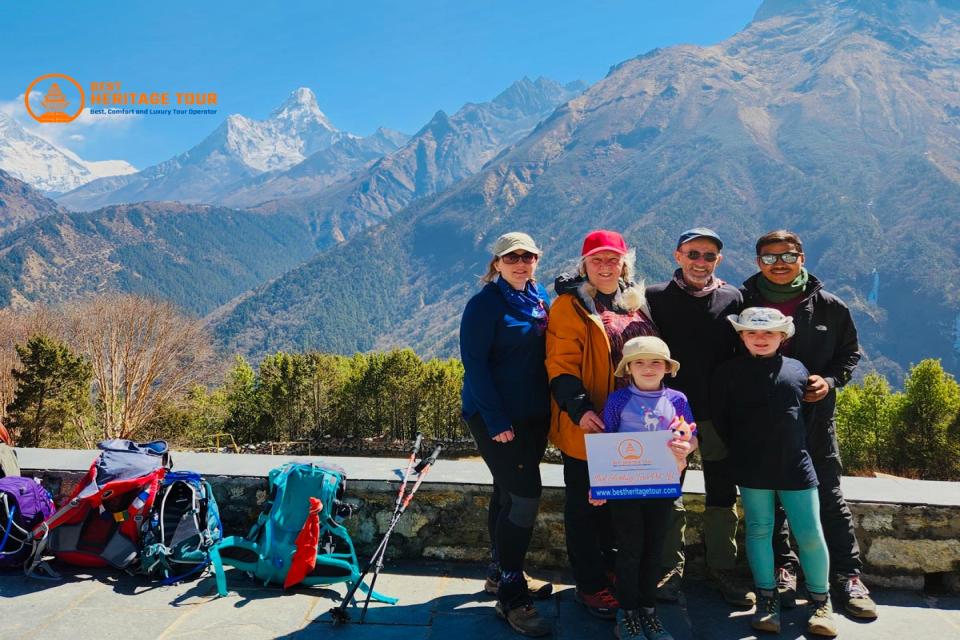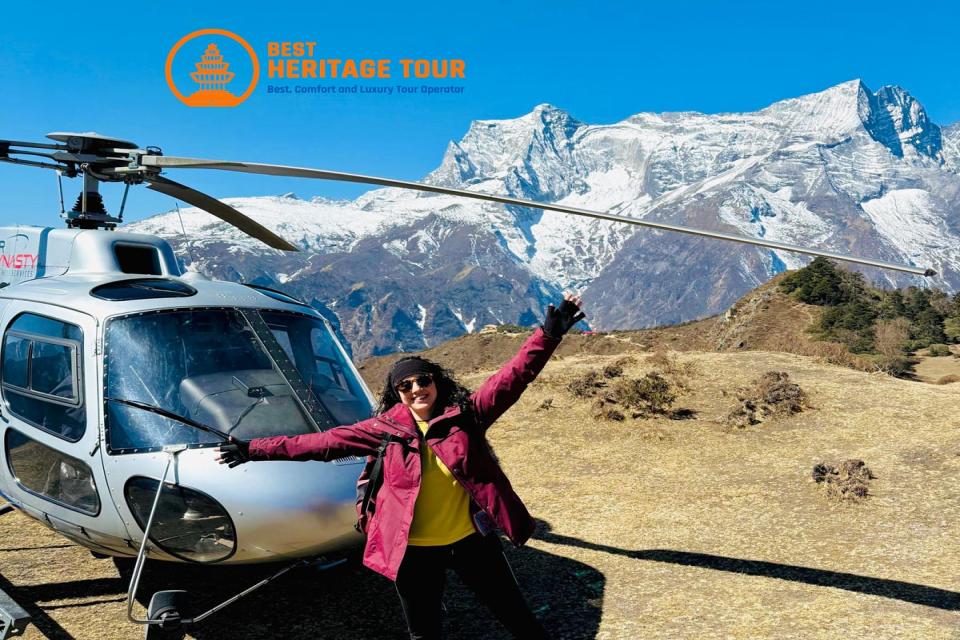The Everest Base Camp Trek is one of the world’s most iconic adventures - a journey that takes you deep into the heart of the Khumbu region, through Sherpa villages, ancient monasteries, high suspension bridges, and dramatic mountain landscapes. For many trekkers, standing at Everest Base Camp (5,364m) is a lifelong dream.
But what if you’re planning the trek in January, one of the coldest months of the year?
Is the Everest Base Camp Trek possible in January?
The straightforward and honest answer: No - not safely for most trekkers.
While parts of the trail remain open, the extreme winter weather, severe cold, high risk of snowfall, and unpredictable conditions make the trek challenging, dangerous, and often inaccessible for the average traveler.
As Himalayan experts and travel specialists - Best Heritage Tour, we want trekkers to make well-informed decisions. So in this detailed guide, you’ll find everything you need to know about attempting the Everest Base Camp Trek in January - from weather conditions and challenges to safety tips and alternatives.
Let’s explore what the Everest region is really like in mid-winter.
Understanding January Weather in the Everest Region
January sits at the heart of winter in Nepal, with temperatures at the highest points dropping drastically.
Here’s what trekkers can expect:
1. Extremely Low Temperatures
-
Namche Bazaar (3,440m): -5°C to -12°C
-
Tengboche (3,867m): -10°C to -18°C
-
Dingboche (4,410m): -15°C to -20°C
-
Lobuche / Gorak Shep (4,900-5,164m): -20°C to -30°C
-
Everest Base Camp (5,364m): -25°C to -35°C
These temperatures don’t include wind chill, which often makes conditions feel even colder.
2. Heavy Snowfall at Higher Altitudes
Snowstorms can hit without warning. When they do:
-
Trails disappear
-
Avalanches become possible
-
Flights to Lukla get canceled for days
-
Villages like Lobuche and Gorak Shep lose accessibility
3. Short Daylight Hours
Sunset comes early in winter. Trekkers must reach their destination before dark - and walking during freezing evenings is dangerous.
4. Strong Winds
Winds can reach 40-60 km/h, especially around Kala Patthar and Gorak Shep, making trekking uncomfortable and unsafe.
So, Is Everest Base Camp Trek Possible in January?
Technically: Yes, it’s possible.
Local guides, winter expedition teams, and highly experienced trekkers occasionally complete the route in January.
Realistically for most trekkers: No - the risks outweigh the rewards.
January is one of the harshest months in the Himalayas. For safety reasons, trekking to Everest Base Camp during this period is not recommended, especially for:
-
First-time trekkers
-
Those without winter high-altitude experience
-
People without full winter climbing gear
-
Solo travelers
However, the lower Khumbu region is still accessible in winter, and those routes can be enjoyed with proper guidance.
Why EBC Trek is Not Recommended in January?
1. Extreme Cold Becomes Dangerous
Temperatures dropping to -30°C (or lower) increase the risk of:
-
Hypothermia
-
Frostbite
-
Altitude sickness
-
Dehydration
Even with high-quality gear, the biting cold of January makes nighttime stays extremely challenging.
2. Tea Houses Close at Higher Altitudes
Many lodge owners migrate to lower villages in winter. This means:
-
Fewer accommodation options
-
Limited food choices
-
No heated dining rooms
-
Scarcity of water (pipes freeze)
-
Higher risk of getting stuck with no shelter
3. Risk of Flight Cancellations to Lukla
Winter often brings fog and snow, causing:
-
Delays
-
Cancellations
-
Unexpected overnight stays
Trekkers on tight schedules face complications when flights are grounded.
4. Snow-Covered and Slippery Trails
Fresh snowfall can bury the trail completely. Ice on slopes makes walking hazardous.
5. Higher Avalanche Risk
Certain sections like the slopes above Dingboche and near Lobuche become avalanche-prone during heavy snowfall.
6. Limited Emergency Support
Rescue operations in deep winter are more complicated. Helicopters may not fly in stormy conditions, slowing down evacuation times.
Who Can Trek to Everest Base Camp in January?
Although not ideal, a very specific group can complete the EBC trek in January:
-
Highly experienced winter trekkers
-
Those who have done high-altitude treks before
-
People with proper winter expedition gear
-
Trekkers accompanied by a certified and experienced guide
-
Slow, well-planned itineraries
-
Trekkers with flexible time
If you don’t fit into this group, January is not the right month for you.
Which Parts of the Everest Region Are Safe in January?
Even though the full EBC trek is not recommended, several lower-altitude sections remain safe and beautiful during winter.
1. Lukla to Namche Bazaar
This part is generally open and accessible.
You can enjoy:
-
Sherpa culture
-
Suspension bridges
-
Stunning views of Thamserku and Kusum Kangaru
-
Evergreen forests
2. Namche Bazaar to Khumjung / Kunde
Short day hikes offer panoramic views without extreme altitude.
3. Tengboche Monastery (Early January Only)
If snowfall is low, you can trek to Tengboche, which offers:
-
Beautiful monastery
-
Views of Everest, Ama Dablam & Lhotse
-
Winter wildlife sightings
These routes allow trekkers to experience Khumbu’s beauty in a safer environment.
Advantages of Trekking in January (If You Still Want to Try)
Even though January is harsh, it does come with some advantages:
1. Crystal-Clear Skies
Winter is known for stable, crisp mornings with incredible mountain visibility.
2. Fewer Trekkers
You’ll experience solitude, peaceful trails, and a quiet Khumbu Valley.
3. Unique Snow-Covered Landscapes
The villages, forests, and peaks covered in snow look magical.
4. Peaceful Tea Houses (Those That Are Open)
With fewer visitors, you receive better attention and warm hospitality.
Major Challenges of EBC Trek in January
1. Water Freezes Everywhere
-
Water bottles freeze
-
Toilets freeze
-
Shower pipes freeze
You must carry warm water in insulated bottles.
2. Slow Walking Due to Ice and Snow
Slippery paths require microspikes and careful walking.
3. Very Cold Nights
Rooms often drop below 0°C at night since teahouses are not insulated.
4. Limited Food Supply
High-altitude lodges stock less food during winter.
5. Health Risks Increase
Winter increases the chances of:
-
AMS (Altitude Mountain Sickness)
-
Chest infections
-
Respiratory problems
Weather Breakdown for January (Estimated)
|
Location |
Day Temp |
Night Temp |
Conditions |
|---|---|---|---|
|
Lukla |
2°C to 8°C |
-5°C to -10°C |
Cold, stable |
|
Namche |
-2°C to 5°C |
-8°C to -12°C |
Cold, windy |
|
Tengboche |
-5°C to 2°C |
-12°C to -18°C |
Very cold |
|
Dingboche |
-10°C to -5°C |
-15°C to -20°C |
Harsh |
|
Lobuche |
-15°C to -10°C |
-20°C to -28°C |
Extreme cold |
|
Base Camp |
-18°C to -12°C |
-25°C to -35°C |
Extreme |
Required Gear If Trekking in January (Essential)
If someone still insists on trekking, they need:
Clothing
-
Down jacket (-30°C rated)
-
Thermal layers (2-3 sets)
-
Waterproof outer shell
-
Fleece mid-layer
-
Heavy winter gloves
-
Thermal socks
-
Balaclava and neck gaiter
Footwear
-
Waterproof boots
-
Gaiters
-
Microspikes / crampons
Sleeping Gear
-
Sleeping bag -20°C to -30°C
-
Sleeping bag liner
Other Essentials
-
Hand warmers
-
Insulated water bottle
-
UV sunglasses
-
Moisturizer and lip balm
-
Trekking poles (very important on ice)
Anyone without full winter gear should avoid the EBC trek in January.
Safety Tips for January Trekking
1. Always Trek With a Guide
Winter trail navigation requires experience.
2. Start Early and Stop Early
Avoid trekking in the evening cold.
3. Monitor Weather Daily
Storms can roll in quickly.
4. Acclimatize Properly
Even in winter, AMS is common.
5. Drink Warm Water
Stay hydrated despite the cold.
6. Do Not Push Beyond Safe Limits
If locals or guides say “stop,” listen.
Conclusion: Should You Trek Everest Base Camp in January?
If your plan is to reach Everest Base Camp, climb Kala Patthar, and complete the full classic EBC trail, then January is NOT the right time. The extreme cold, heavy snow, trail closures, hazardous winds, and limited accommodation make the trek unsafe for most people.
However, if you still want to experience the beauty of the Everest region, the lower Khumbu trails remain accessible and stunning in winter. With proper guidance from local experts, you can enjoy a safe and memorable winter trek.
For personalized trekking advice, route planning, or safe winter trekking options in Nepal, Best Heritage Tour is here to assist you every step of the way.
Contact Best Heritage Tour
Phone / WhatsApp / Viber: +977-9851149197 / +977-9810043046
Email: info@bestheritagetour.com / bestheritagetour@gmail.com
Website: www.bestheritagetour.com
Office Address: Thamel Marg, Kathmandu, Nepal
Let us help you plan your trekking adventure with safety, comfort, and expert guidance.
Author: Best Heritage Tour
Date: 18th November, 2025







